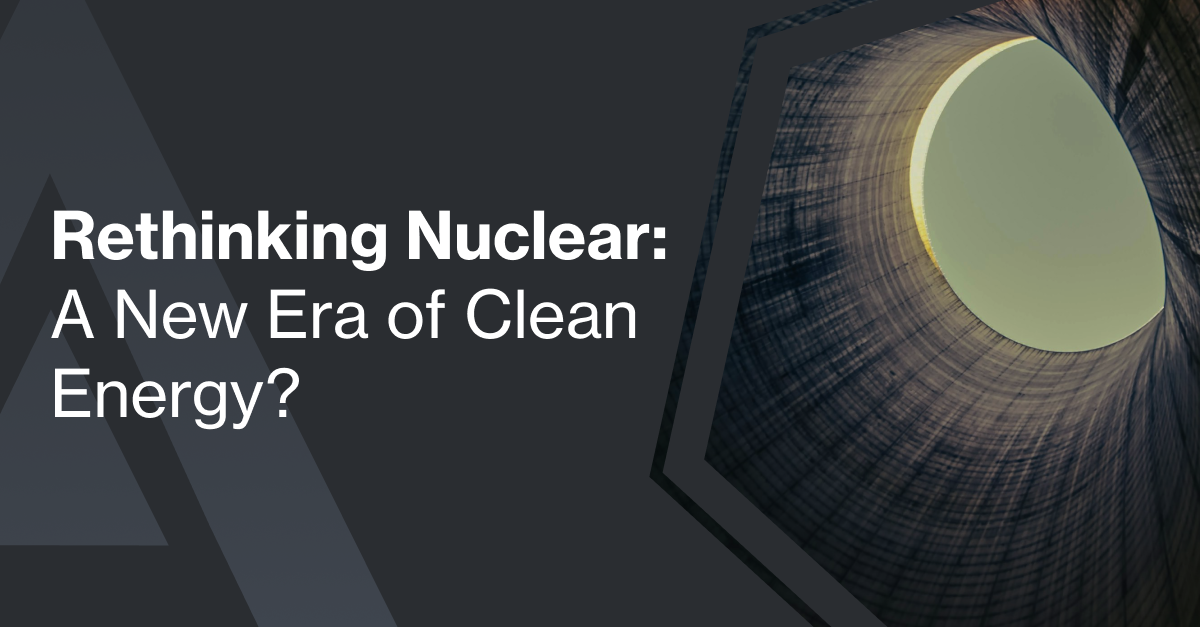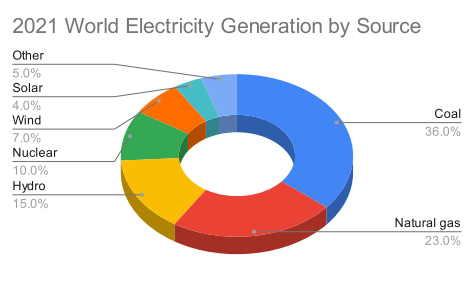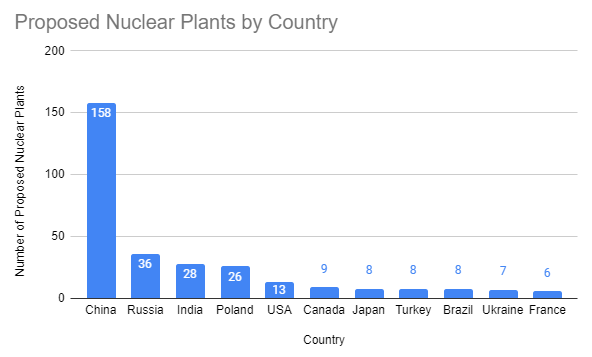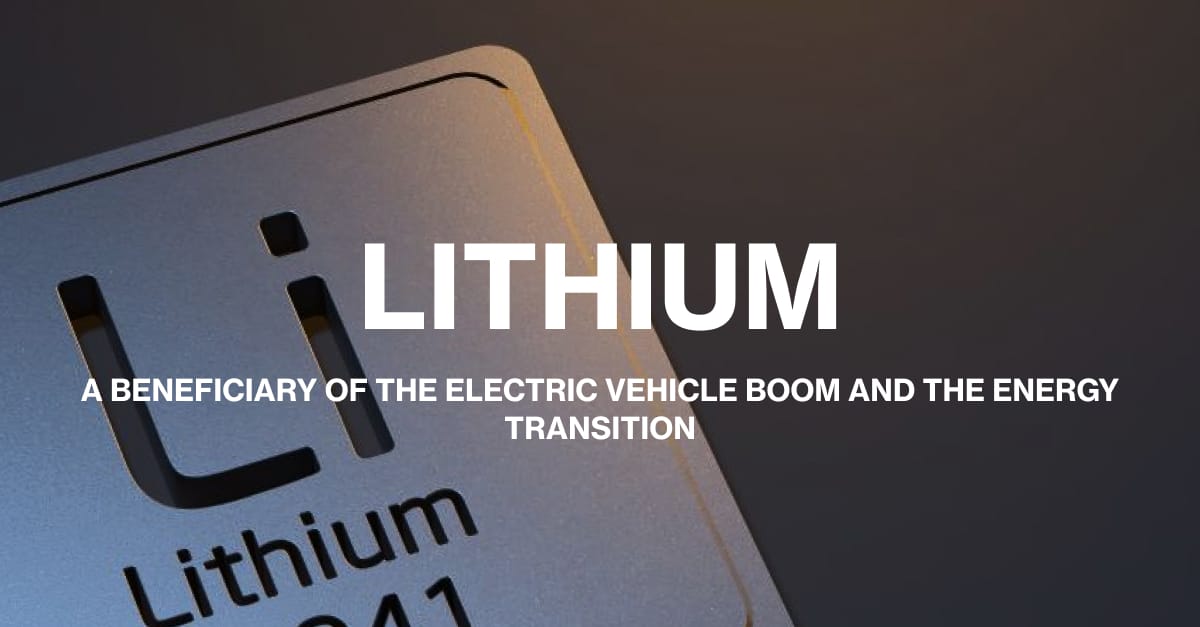Rethinking Nuclear: A New Era of Clean Energy?

Summary
- The global outlook for electricity demand is strong, with the share of renewables at 30%.
- Nuclear power generation is zero-emission.
- Compared to other zero-emission options, nuclear power generation has lower per-unit running cost and lifetime total cost per unit generated.
- With the capability for 24 hour uptime, nuclear power is 2-3 times more reliable than other generation options.
The global energy crisis and evolving geopolitical landscape have made clear the need for innovative and reliable energy solutions. As demand for energy continues to grow and the limitations of renewable energy sources become increasingly evident, nuclear power is re-emerging as a viable long-term option.
Nuclear’s Role in Energy Transition
The 2023 Net Zero Emissions by 2050 Scenario under the Paris Agreement describes a pathway for the global energy sector to reach net zero CO2 emissions by 2050 by deploying a wide portfolio of clean energy technologies, without offsets from land-use measures. Nuclear power is a promising solution for addressing these global decarbonization challenges. It offers several advantages over other zero-emission energy sources. Notably, nuclear power plants are reliable, producing electricity 24/7 with minimal greenhouse gas emissions. Compared to wind and solar, nuclear has lower per-unit operating costs and total lifetime costs per unit of electricity generated.

While upfront investment for nuclear, wind, and solar is higher than for some traditional methods, nuclear emerges as the most cost-effective option. This is evident from the Levelized Cost of Electricity (LCOE) and Levelized Full System Cost of Electricity (LFSCOE) illustrated in Figure 2.
Nuclear power's economic viability is further bolstered by its exceptional reliability. Unlike renewable sources like wind and solar, which fluctuate based on environmental factors such as sunlight duration, weather conditions, and wind consistency, nuclear power plants ensure continuous operation. This reliability is essential for grid stability, particularly as we transition away from fossil fuels.
The urgency to decarbonize the energy sector by 2050 also underscores the critical role nuclear power can play. Electricity generation, responsible for over 40% of global energy-related emissions, demands an innovative solution. The global energy sector, accounting for roughly three-quarters of greenhouse gas emissions, relies heavily on fossil fuels – coal (45%), oil (35%), and gas (20%).[1]
Reducing carbon emissions from the electricity sector is key to addressing emissions from the energy sector as a whole. As the World Nuclear Association states,[2]"[a]bout 20% of final energy consumption is in the form of electricity, but the generation of electricity is responsible for over 40% of all energy-related emissions." This shift towards cleaner electricity generation not only reduces emissions directly, but also facilitates the electrification of other sectors like transportation, further accelerating decarbonization efforts.
Deconstructing Safety Myths
Despite historical accidents like Chernobyl and Fukushima, modern nuclear power plants adhere to stringent safety standards. According to BofA Global Research,[3] living near a nuclear plant for a year poses less radiation exposure than a single dental chest X-ray. Coal power plants, in contrast, emit 33 times more radiation through their ash.
Nuclear waste disposal is also subject to rigorous international regulations. Used nuclear fuel is initially stored in water to cool before being transferred to dry storage facilities. Advances in dry storage technology have improved the efficiency and safety of this process.
Regional Demand
Nuclear energy remains the largest carbon-neutral source of baseload electricity production in Europe. In 2022, the 167 existing nuclear units accounted for approximately 22% of the electricity generated within the European Union.[4] As the EU strives to phase out fossil fuels, the demand for nuclear power is increasing, driven by both the Net Zero by 2050 target and the energy crisis stemming from the Russo-Ukrainian conflict.

In the United States, nuclear power has consistently contributed nearly 20% of electricity generation for the past two decades.[5] Despite a decline in favor of coal and gas in the 1990s, nuclear is poised for a resurgence as demand for electricity continues to grow and the need for lower-emission power sources intensifies. Public support for nuclear power in the US has also risen, reaching 57% in 2023 from 43% in 2020.[6]
Globally, the demand for electricity is expanding rapidly due to factors such as robust economic growth, intense heat waves, and the increasing energy consumption of technologies like artificial intelligence and cryptocurrency mining. The International Energy Agency (IEA) supports this trend, highlighting the unprecedented acceleration of electricity demand in recent years.[7]
To meet this growing demand, the nuclear industry is experiencing a significant expansion. There are currently 440 nuclear power reactors operating worldwide, with over 60 under construction and 110 planned. Proposed projects could double the number of reactors globally in the coming decades.[8] Countries with the highest number of proposed nuclear plants include:

Tracking the Nuclear Industry
BITA's Nuclear Universe meticulously monitors 126 companies within the nuclear industry. Of these, 27 derive over 25% of their revenue from selling nuclear supply chain products. Additionally, BITA's Uranium Universe tracks 115 companies, each generating more than 25% of their revenue from uranium mine products.


Conclusion
Nuclear energy is poised to play a pivotal role in the future, offering a viable alternative to fossil fuels and complementing renewable energy sources. As renewable energy expands, nuclear power can help achieve decarbonization goals and meet increasing energy demands.
BITA's coverage extends beyond traditional sector-based indexing, encompassing promising and innovative fields. We publish two live indexes related to our Uranium and Nuclear universes:
Our proprietary data team meticulously tracks the performance of companies with significant involvement in the uranium and nuclear industries. We anticipate these sectors to grow as essential components of the electricity sector alongside renewable energies.
References
Aszódi, A., Biró, B., Adorján, L., Dobos, Á. C., Illés, G., Tóth, N. K., . . . Zsiborás, Z. T. (2023, October 27). ScienceDirect. Retrieved from https://www.sciencedirect.com/science/article/pii/S002954932300537X#s0050
Ball, P. (2023, June 1). Scientific American. Retrieved from https://www.scientificamerican.com/article/what-is-the-future-of-fusion-energy/
BofA Global Research. (2023, May 9). ADVISOR ANALYST. Retrieved from https://advisoranalyst.com/wp-content/uploads/2023/05/bofa-the-ric-report-the-nuclear-necessity-20230509.pdf
Chabinsky, H. (2023, December). Last Energy. Retrieved from https://www.lastenergy.com/blog/7-graphs-that-show-the-true-value-of-nuclear-energy
Cho, R. (2020, November 23). Columbia Climate School. Retrieved from https://news.climate.columbia.edu/2020/11/23/nuclear-power-today-future/
Corporate Finance Institute. (n.d.). Corporate Finance Institute. Retrieved from https://corporatefinanceinstitute.com/resources/accounting/energy-return-on-investment-eroi/#:~:text=Energy%20return%20on%20investment%20(EROI)%20is%20a%20ratio%20that%20measures,gained%20from%20selling%20said%20energy.
Deutch, J. M., Forsberg, C. W., Kadak, A. C., Kazimi, M. S., Moniz, E. J., Parsons, J. E., . . . Yagbo. (2009). Future of Nuclear Power. Massachusetts: Massachusetts Institute of Technology. Retrieved from https://energy.mit.edu/wp-content/uploads/2009/05/MITEI-The-Future-of-Nuclear-Power-Update.pdf
Dhungana, S. (2022, July 5). eGrove. Retrieved from https://egrove.olemiss.edu/cgi/viewcontent.cgi?article=3663&context=hon_thesis
Dumas, J., Dubois, A., Thiran, P., Jacques, P., Contino, F., Cornélusse, B., & Limpens , G. (2022, October 19). Springer Link. Retrieved from https://link.springer.com/article/10.1007/s41247-022-00106-0
European Commission. (2024, May 2). European Commission. Retrieved from https://joint-research-centre.ec.europa.eu/jrc-news-and-updates/future-nuclear-technologies-trends-threats-and-opportunities-2024-05-02_en
Fauzia, M. (2024, January 29). Retrieved from https://www.popularmechanics.com/science/energy/a43929475/future-of-nuclear-energy/
Hakkak, M., Altintaş, N., & Hakkak, S. (2023, August 4). Science Direct. Retrieved from https://www.sciencedirect.com/science/article/abs/pii/S1755008423000698
Hvistendahl, M. (2007, December 13). Scientific American. Retrieved from https://www.scientificamerican.com/article/coal-ash-is-more-radioactive-than-nuclear-waste/
Intergovernmental Panel on Climate Change. (2014). Intergovernmental Panel on Climate Change. New York: Cambridge University Press. Retrieved from https://www.ipcc.ch/site/assets/uploads/2018/02/ipcc_wg3_ar5_full.pdf
Jie, L. H. (2023, August 21). Retrieved from https://www.cnbc.com/2023/08/22/nuclear-energy-the-answer-to-a-sustainable-future-experts-are-divided.html
Krūmiņš, J., & Kļaviņš, M. (2023, April 22). MDPI. Retrieved from https://www.mdpi.com/1996-1073/16/9/3612
Liu, L., Guo, H., Dai, L., Liu, M., Xiao, Y., Cong, T., & Gu, H. (2023, June 11). Retrieved from https://www.sciencedirect.com/science/article/abs/pii/S014919702300207X#preview-section-introduction
Misra, S. (2023, March 20). Retrieved from https://jpt.spe.org/plummeting-energy-return-on-investment-of-oil-and-the-impact-on-global-energy-landscape
National Geographic. (n.d.). National Geographic. Retrieved from https://education.nationalgeographic.org/resource/nuclear-energy/
Oxford Institute for Energy Studies. (2024, February 18). Oxford Institute for Energy Studies. Retrieved from https://www.oxfordenergy.org/wpcms/wp-content/uploads/2024/02/OEF-139-.pdf
THE LONG-TERM STRATEGY OF THE UNITED STATES. (2021). Washington DC: United States Department of State. Retrieved from https://www.whitehouse.gov/wp-content/uploads/2021/10/us-long-term-strategy.pdf
Unite State Energy Information Administration. (2023, October 11). Unite State Energy Information Administration. Retrieved from https://www.eia.gov/pressroom/releases/press542.php
United Nations Economic Commission for Europe. (2022, March). Retrieved from https://unece.org/sites/default/files/2022-04/LCA_3_FINAL%20March%202022.pdf
United States Nuclear Regulatory Commission. (2021, March 09). United States Nuclear Regulatory Commission. Retrieved from https://www.nrc.gov/reading-rm/basic-ref/glossary/capacity-factor-net.html
Wang, Q., Guo, J., Li , R., & Jiang, X.-t. (2023, January 19). Science Direct. Retrieved from https://www.sciencedirect.com/science/article/abs/pii/S0013935123000828#preview-section-abstract
World Nuclear Association. (2024, April 30). World Nuclear Association. Retrieved from https://world-nuclear.org/information-library/energy-and-the-environment/carbon-dioxide-emissions-from-electricity#2


